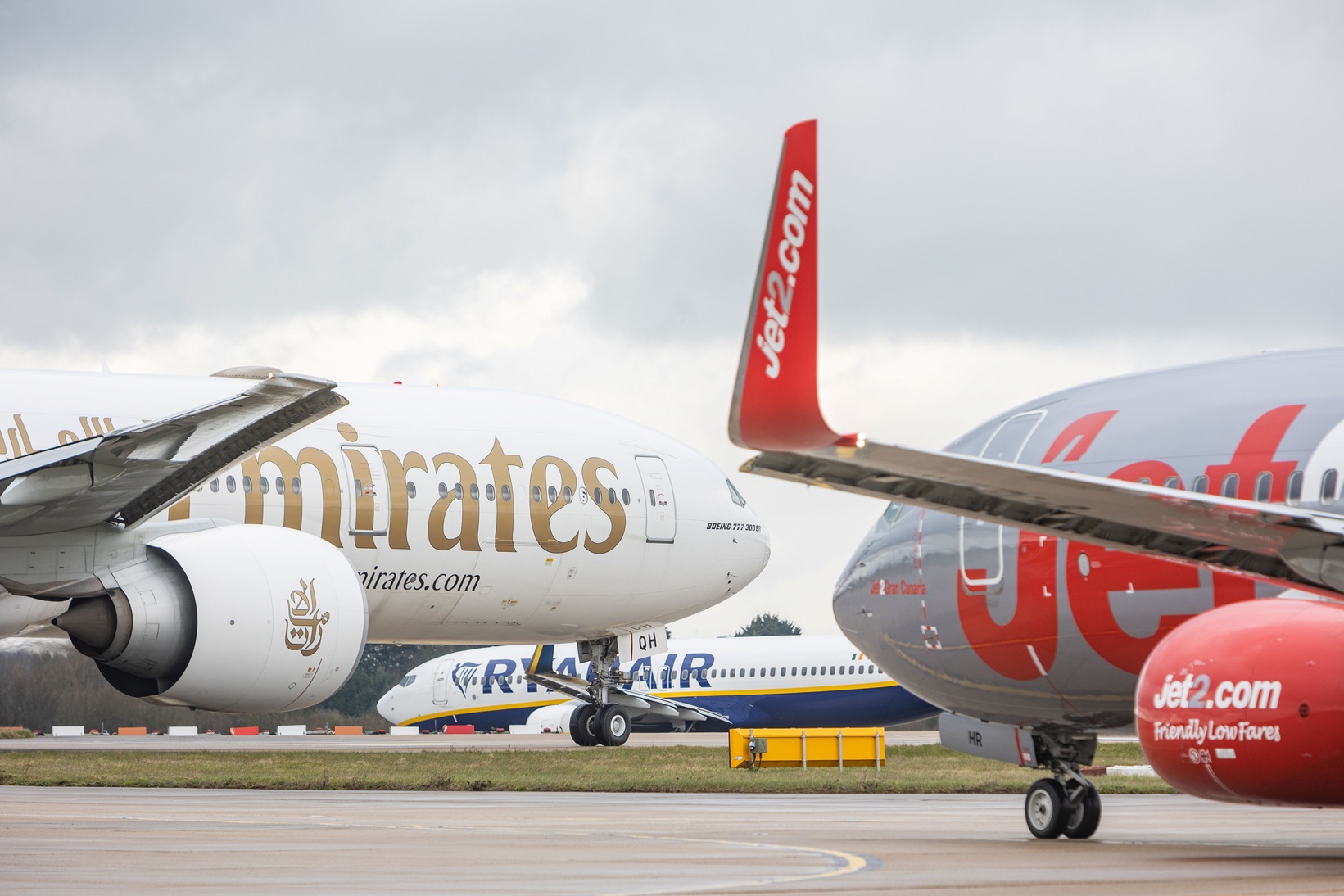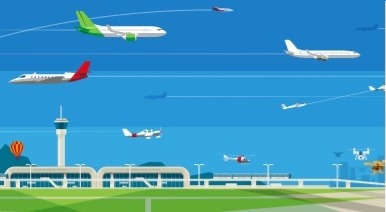IATA reveals passenger and cargo demand rose in September

Image courtesy IATA
Total passenger traffic in September 2023 (measured in revenue passenger kilometres or RPKs) rose 30.1% compared to September 2022. Globally, traffic is now at 97.3% of pre-COVID levels.
Domestic traffic hit a new high for the month of September, as traffic rose 28.3% versus September 2022 and exceeded the September 2019 level by 5.0%.
International traffic climbed 31.2% compared to the same month a year ago. All markets saw double-digit percentage gains year on year. International RPKs reached 93.1% of September 2019 levels.
“The third quarter of 2023 ended on a high note, with record domestic passenger demand for the month of September and continued strong international traffic,” said Willie Walsh (above), IATA’s Director General.

International Passenger Markets
Asia-Pacific airlines had a 92.6% increase in September 2023 traffic compared to September 2022, continuing to lead the regions in terms of annual improvement. Capacity climbed 82.1% and the load factor increased by 4.5 percentage points to 82.5%.
European carriers’ September traffic climbed 15.7% versus September 2022. Capacity increased 14.9%, and load factor edged up 0.6 percentage points to 85.5%.
Middle Eastern airlines saw a 26.6% increase in September traffic compared to a year ago. Capacity rose 23.7% and load factor climbed 1.9 percentage points to 81.8%.
North American carriers had an 18.9% traffic rise in September 2023 versus the 2022 period. Capacity increased 18.0%, and load factor improved 0.6 percentage points to 85.6%.
Latin American airlines’ traffic rose 26.8% compared to the same month in 2022. September capacity climbed 24.7% and load factor rose 1.4 percentage points to 85.8%.
African airlines posted a 28.1% traffic increase in September 2023 versus a year ago. Capacity was up 29.9% and load factor slipped 1.0 percentage points to 72.6%.

China’s domestic market continued to perform, with demand up 168.7% year over year. This growth however is measured from a low base in September 2022, when domestic travel restrictions were reintroduced in some Chinese provinces.
Japan’s domestic traffic rebounded strongly from the impact of typhoons in August, as RPKs rose 19.9% compared to September 2022.

Walsh said: “With the end of 2023 fast approaching, we can look back on a year of strong recovery in demand as passengers took full advantage of their freedom to travel. There is every reason to believe that this momentum can be maintained in the New Year, despite economic and political uncertainties in parts of the world. But we need the whole value chain to be ready. Supply chain issues in the aircraft manufacturing sector are unacceptable. They have held back the recovery and solutions must be found. The same holds true for infrastructure providers, particularly air navigation service providers. Equipment failures, staffing shortages and labor unrest made it impossible to deliver the flying experience our customers expect. A successful 2024 needs the whole value chain to be fully prepared to handle the demand that is coming.”
Cargo
IATA data for September 2023 global air cargo markets, showed continuing demand recovery.
Global demand, measured in cargo tonne-kilometres (CTKs*), increased by 1.9% compared to September 2022 levels (+6% for international operations).
Capacity, measured in available cargo tonne-kilometers (ACTKs), was up 12.1% compared to September 2022 (+0% for international operations). Growth was largely related to international belly capacity which rose 31.5% year-on-year as airlines scaled up operations to meet peak-northern summer travel season demand.
Several factors in the operating environment should be noted:
- In September, both the manufacturing output Purchasing Managers Index or PMI (49.7) and new export orders PMI (47.7) saw a slight improvement to the previous month. They remained, however, below the critical 50-point threshold, indicating a continuing, but slightly slower, annual decline in global manufacturing production and exports.
- Global cross-border trade contracted for the fifth month in a row in August, decreasing 3.8% year-over-year. This reflects the cooling global macroeconomic environment.
- Annual growth in US consumer prices stabilized in September at 3.7%, the same rate as in August. In Europe and Japan consumer price inflation slowed by 1.0 and 0.2 percentage points, respectively, to 4.9% and 3.0%, (also respectively). In China, deflation-fighting policy measures saw an annual rise in consumer prices of 0.1%.
- In September, the average price of jet fuel was USD 131.0 per barrel, marking a 43.1% increase from the May 2023 price. Recouping some of this added cost from surcharges in September contributed to the first increase in air cargo yields since November 2022.
Walsh said: "Air cargo eked out modest growth (1.9%) in September despite falling trade volumes and high jet fuel prices. That clearly shows the strength of air cargo’s value proposition. With the key export order and manufacturing PMIs hovering near positive territory, we can be cautiously optimistic for a strong year-end peak season."

September Regional Performance
Asia-Pacific airlines saw their air cargo volumes increase by 7.7% in September 2023 compared to the same month in 2022. This was a significant improvement in performance compared to August (+4.6%). Carriers in the region benefited from growth on three major trade lanes: Europe-Asia (+9.6%), Middle East-Asia (+7.0%) and Africa-Asia (+12.8%). Available capacity for the region’s airlines increased by 30.5% compared to September 2022 as more belly capacity came online from the passenger side of the business (a year ago, the key Asian markets of Japan and China were still largely under severe COVID-19 travel restrictions).
North American carriers had the weakest performance in September, with a 2.2% decrease in cargo volumes. This was a decline in performance compared to August (-1.4%). Although contractions in the North America-Asia trade lane narrowed (from -4.3% in August to -1.8% in September) and the North America-Europe market stabilized its decline at (-2.5%) for the second month in a row. Carriers in the region did not benefit significantly. Capacity increased moderately by 0.2% compared to September 2022.
European carriers saw their air cargo volumes decline by 1.5% in September compared to the same month in 2022. This was a weaker performance than in August (-0.6%). Carriers in the region suffered from further contractions in the within Europe market (-5.7% in September vs -5.2% in August). Gains made from the expansion in the Middle East-Europe trade lane (+3.3% in September vs +0.5% in August) offset some declines from the within Europe performance. Capacity increased 4.7% in September 2023 compared to 2022.
Middle Eastern carriers had the strongest performance in September 2023, with a 2.5% year-on-year increase in cargo volumes. This was an improvement from the previous month’s performance (+1.3%). Carriers in the region benefited from growth in the Middle East–Asia (+7.0%) and Middle East–Europe markets (+3.3%). Capacity increased 16.1% compared to September 2022.
Latin American carriers experienced a 2.3% increase in cargo volumes compared to September 2022. This was a significant decrease in performance compared to the previous month (+6.2%). Capacity in September was up 14.4% compared to the same month in 2022.
African airlines saw their air cargo volumes decline by 0.1% in September 2023, despite the strong growth of demand on the Africa-Asia trade lane (+12.8%). This was an improvement in performance compared to August (-3.5%). Capacity was 2.7% above September 2022 levels.












